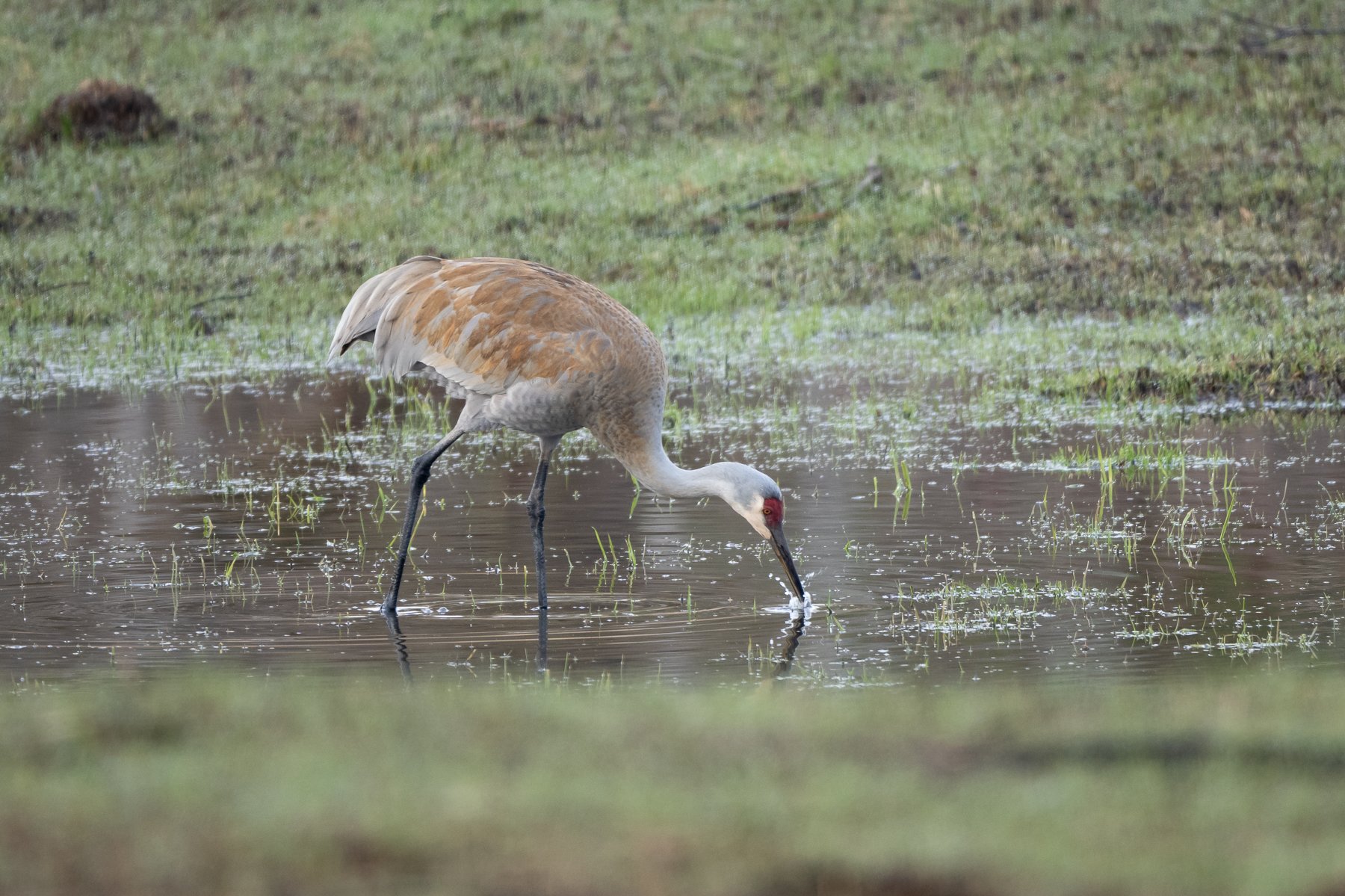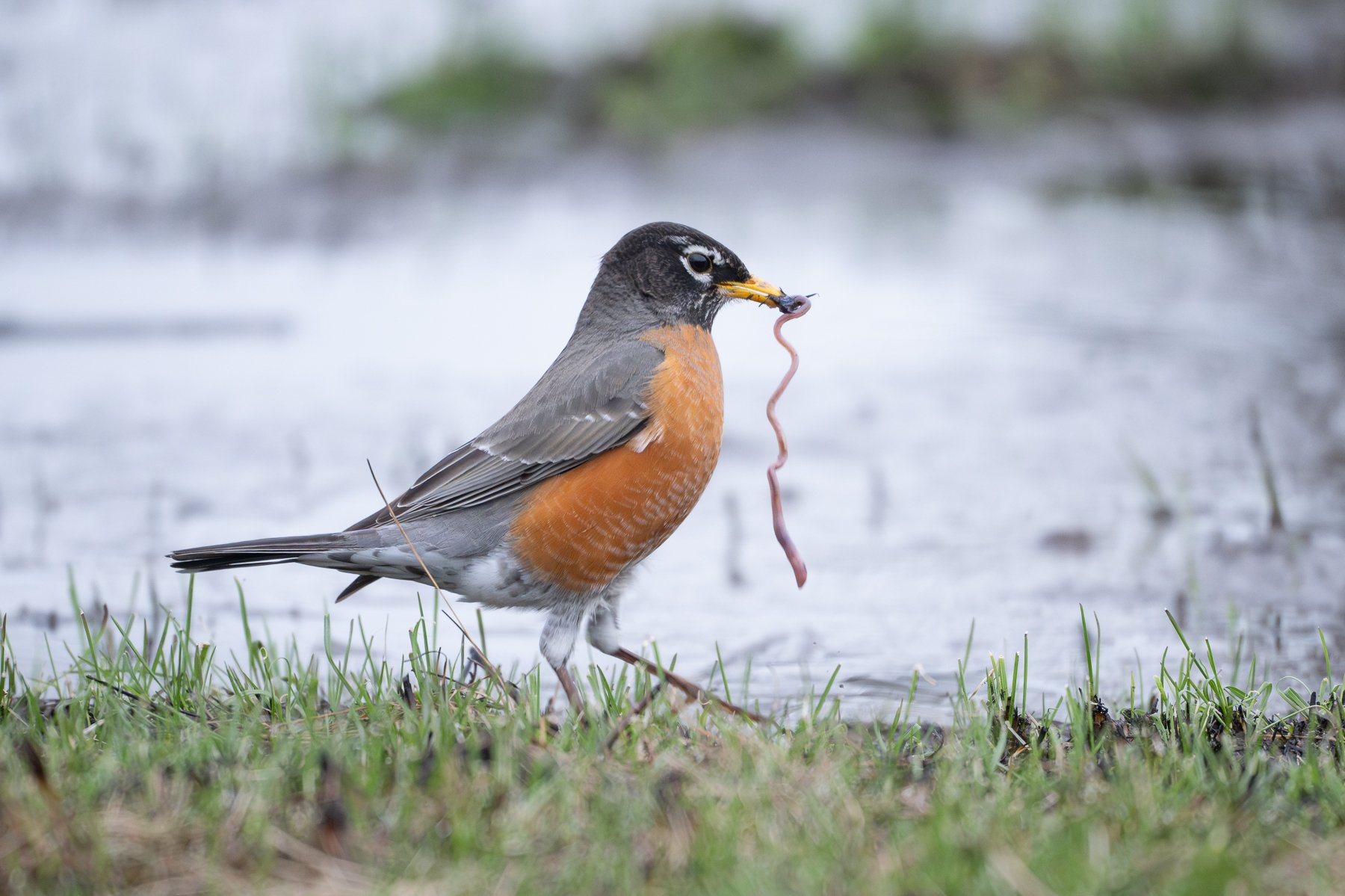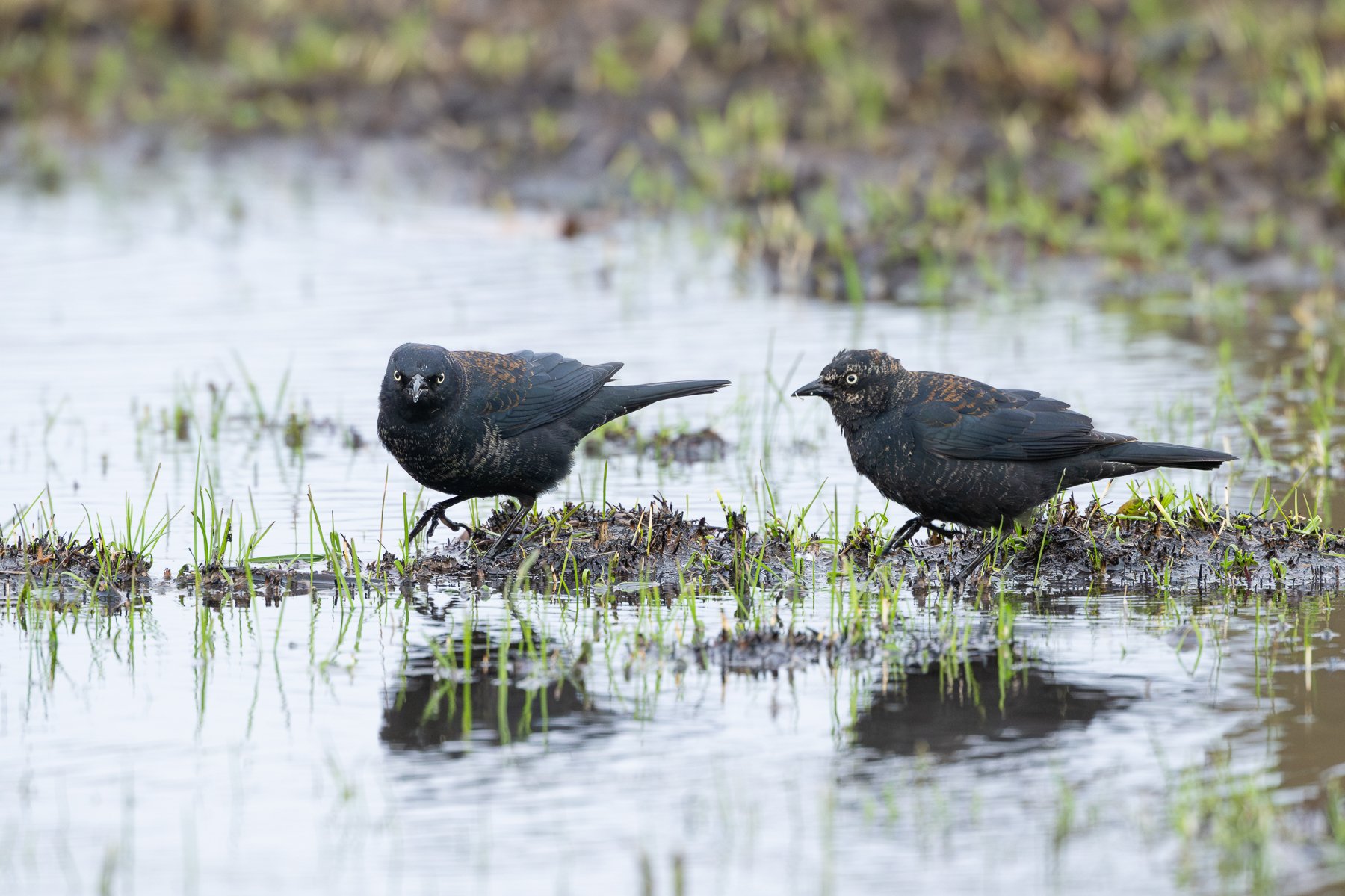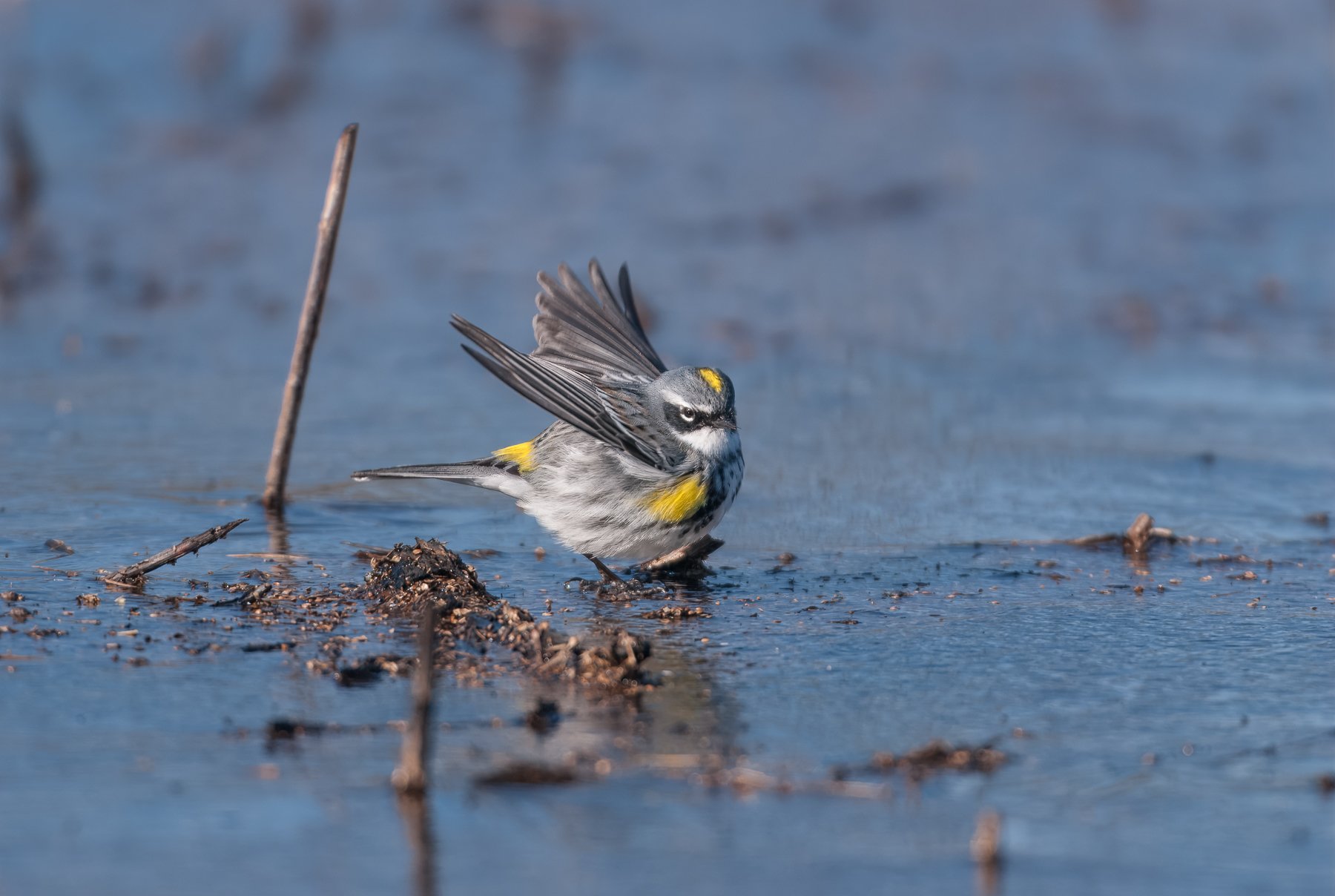The gentle undulations of the prairie surface revealed by a recent spring burn drop off into a swale at its southern end. The low spot begins at the base of an aspen grove on the east and ends about 50 yards to the west near a sedge meadow. A small rise at the border between the swale and the sedge meadow holds back the water, creating a depression that retains snowmelt and spring rain for several days. Light glinting off the surface of the water is interrupted by clumps of emerging sedges and patches of mud. But this is not a quiet place.
The guardians of the swale are a pair of Canada Geese, always watchful, even as they loaf in the surrounding prairie. A pair of Sandhill Cranes visit the pool in tandem to wade and probe in early spring, but after they begin nesting in the nearby sedge meadow, only one crane at a time visits, while their mate remains on the nest. Flocks of robins come and go during the day to feed on juicy earthworms that they pull out of the shallow water or wet mud. Rusty Blackbirds forage along the edges, gleaning small invertebrates or seeds. When the air warms, Tree Swallows swoop above the water. One morning this year in mid-March, an Eastern Phoebe flew in and briefly perched on a dead plant stem. In mid-April another year, a hard overnight frost left a smooth sheet of ice, and the early morning feeders included a pair of Yellow-rumped Warblers that found they were on solid footing when they descended to search for food. Occasional visitors at the swale in some years are Killdeer and Wilson’s Snipe.




This prairie version of a suburban rain garden or a woodland vernal pool provides important ecosystem functions like water retention and groundwater recharge, but in addition, it is a valuable food resource for both migrating and resident birds. Beginning at dawn, it is a busy supermarket, offering snails, frogs, tender plants, and lots of worms!
Written by Gary and Penny Shackelford, Fair Meadows Sanctuary resident managers
Cover image by Gary Shackelford. Water-filled swale in the prairie two weeks after a prescribed burn. Several American Robins and a pair of Canada Geese are shown at water’s edge.





